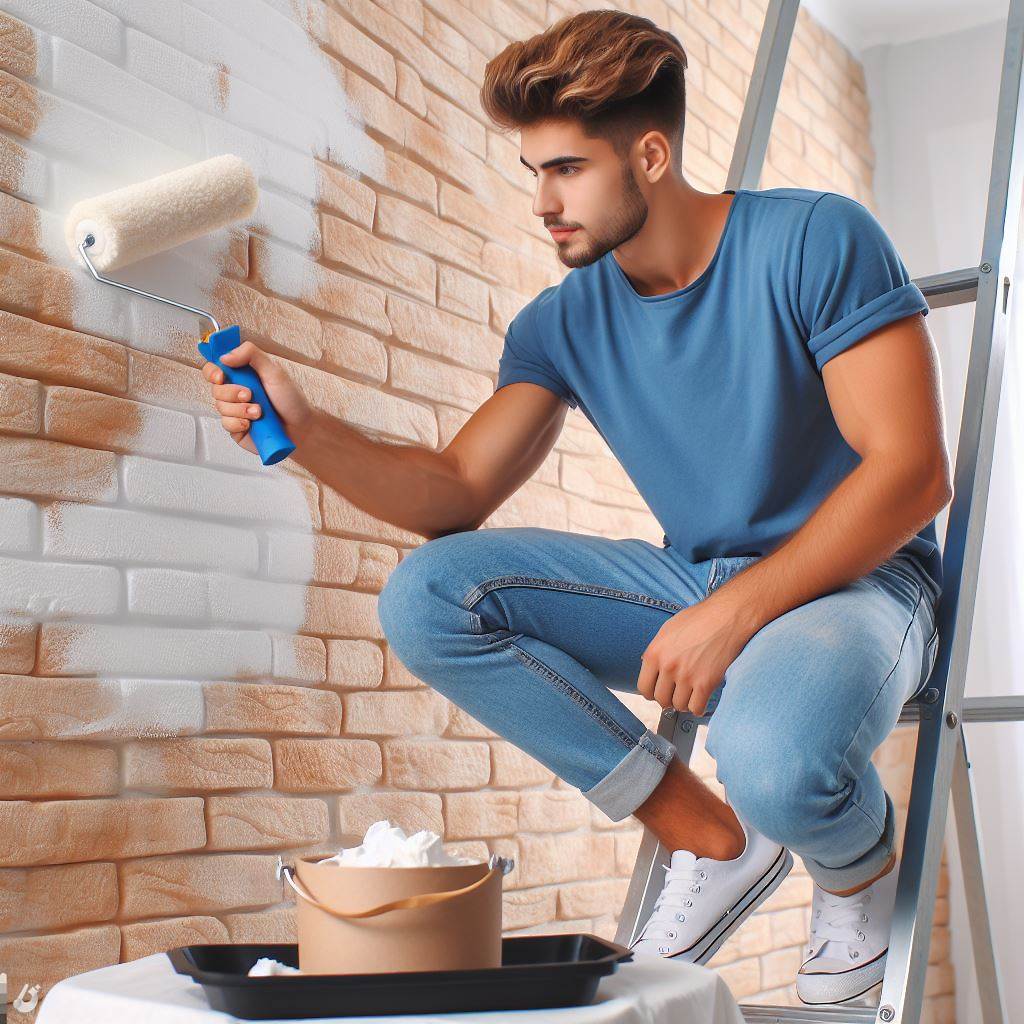Introduction
A. Historical Home Renovation
Reviving the charm of historical homes requires a delicate touch. Preserving their unique character while incorporating modern comforts demands careful consideration.
B. Importance of Following the Do’s and Don’ts
Navigating historical home renovations involves a nuanced understanding.
Adhering to guidelines ensures authenticity and safeguards against unintended damage, preserving both heritage and property value.
C. Preview of Topics
- Researching the Era: Uncover the historical context to guide renovations.
- Materials Matter: Use period-appropriate materials for an authentic touch.
- Respectful Restoration: Balance preservation and necessary updates.
- Code Compliance: Navigate regulations without compromising historical integrity.
- Professional Guidance: Engage experts familiar with historical renovations.
Join us as we delve into these topics, guiding you through the intricate journey of historical home restoration.
Research and Preparation
Before embarking on a historical home renovation project, conducting thorough research is essential.
Taking the time to gather information about the property will help ensure that the renovation is done correctly and in a way that preserves its historical significance.
A. Importance of thorough research before starting renovation
Researching the history of a historical home is crucial for understanding its original design, architectural style, and historical context.
It provides a foundation for making informed decisions during the renovation process.
Without thorough research, there is a risk of making inappropriate alterations or overlooking significant historical features.
By conducting research, homeowners can understand the home’s unique characteristics and plan the renovation accordingly.
B. Identifying the historical significance of the home
Identifying the historical significance of a home is an essential step in the research process.
This involves determining if the property is listed on any historical registries or has any specific architectural or historical designations.
Understanding the historical significance allows homeowners to tailor the renovation to preserve and enhance those features.
It also helps in making informed decisions regarding additions or changes that may impact the historical integrity of the property.
C. Consulting with experts and historians
Engaging experts and historians during the research phase is highly recommended.
These professionals can provide valuable insights into the historical background of the home, its architectural style, and appropriate renovation techniques.
Historians can uncover hidden historical details, while architectural experts can guide homeowners on the best practices for renovating historical properties.
Their expertise ensures that the renovation stays true to the original design and respects the historical significance of the home.
D. Acquiring necessary permits and permissions
Renovating a historical home often requires obtaining permits and permissions from local authorities.
These permits ensure that the renovation follows specific regulations and guidelines aimed at preserving historical properties.
Before starting any work, homeowners should consult with the local planning department to understand the requirements.
Failing to secure the necessary permits can result in legal repercussions and may even require undoing completed work.
In review, thorough research and preparation are vital for successfully renovating historical homes.
By understanding the significance of the property, consulting with experts, and obtaining the necessary permits, homeowners can preserve the historical integrity while improving the home for modern living.
Preservation of Historical Elements
Preserving the historical elements of a home is of utmost importance when renovating.
These elements not only add character and charm but also contribute to the home’s historical value.
Here are some key aspects to consider when it comes to preserving these elements:
A. Importance of preserving original features
- Historical significance: Original features represent a tangible connection to the past, allowing homeowners to appreciate the history of their property.
- Unique character: These elements often possess intricate craftsmanship and design details that cannot be replicated, offering a distinct aesthetic appeal.
- Value appreciation: Preserved historical elements can increase a property’s value, especially for those with an appreciation for heritage homes.
B. Identifying and restoring historical architectural details
- Thorough research: Before embarking on any renovation project, it is crucial to research and understand the historical significance and architectural detailing of the home.
- Professional assessment: Hiring a professional architect or historical preservation expert can help identify key architectural details and provide guidance on restoration.
- Documenting original features: It is essential to document and photograph the existing historical elements to ensure they are accurately restored or replicated during the renovation process.
- Attention to detail: Restoring historical architectural details requires meticulous craftsmanship to maintain the authenticity and integrity of the original design.
C. Utilizing appropriate materials and techniques
- Traditional materials: Whenever possible, opt for materials that match the period in which the home was built. This ensures authenticity and maintains historical accuracy.
- Preservation-friendly techniques: Employ techniques that prioritize conservation rather than alteration, minimizing damage to the original elements.
- Eco-friendly choices: Consider environmentally friendly and sustainable materials and methods to make the renovation more efficient and reduce the carbon footprint.
D. Tips for salvaging and repurposing original components
- Evaluate salvageable components: Determine which elements can be salvaged and repurposed, such as doors, windows, moldings, or flooring, by assessing their condition and functionality.
- Restoration vs. replication: Decide whether original components should be restored or replicated, depending on their condition and availability of suitable replacements.
- Professional guidance: Consult with experts specializing in architectural salvage to navigate the process of salvaging and sourcing compatible materials.
- Creative reuse: Explore innovative uses for salvaged materials, such as transforming old doors into unique furniture pieces or repurposing salvaged moldings as decorative accents.
Preservation of historical elements plays a crucial role in maintaining the integrity and historical value of a renovated home.
By recognizing the importance of these elements, identifying and restoring architectural details, utilizing appropriate materials, and salvaging original components, homeowners can successfully preserve the charm and character of their historical property while breathing new life into it.
Read: Budgeting Tips for Your Next Renovation Project
Modern Upgrades and Improvements
A. Balancing preservation with modern functionality
When renovating historical homes, it is important to strike a balance between preserving its original charm and incorporating modern functionality.
Here are some tips to achieve this:
- Research the history of your home: Understanding the architectural style and features of your historical home will help you make informed decisions during the renovation process.
- Create a preservation plan: Identify the key elements you want to preserve, such as original flooring, woodwork, or windows.
- Consult with preservation experts: Seek advice from professionals experienced in historical home renovations to ensure that any changes you make align with preservation guidelines and regulations.
- Prioritize modern functionality: Assess the functional needs of your household and determine which modern amenities are important to incorporate.
- Integrate modern technology: Look for ways to seamlessly integrate modern technology, such as smart home systems or energy-efficient appliances, without compromising the historical aesthetics.
B. Incorporating energy-efficient solutions
Preserving a historic home doesn’t mean you have to sacrifice energy efficiency.
Here’s how you can incorporate sustainable solutions:
- Update insulation: Improve energy efficiency by insulating attic spaces, walls, and floors with materials that meet modern standards while being sensitive to the home’s historical character.
- Upgrade windows and doors: Replace old, drafty windows and doors with energy-efficient alternatives that mimic the original style.
- Install a programmable thermostat: Regulate the temperature in your historic home efficiently by installing a programmable thermostat, reducing energy consumption.
- Consider solar panels: Explore the possibility of installing solar panels on less visible parts of the roof to generate clean energy.
- Choose energy-efficient appliances: Opt for modern appliances with high energy efficiency ratings that blend seamlessly with the kitchen or other areas of your historical home.
C. Upgrading electrical, plumbing, and HVAC systems
Ensuring the safety and functionality of your historical home requires upgrading essential systems:
- Assess electrical wiring: Hire a certified electrician to evaluate and upgrade the electrical system, making it safe and capable of meeting modern demands.
- Modernize plumbing: Replace outdated plumbing with new materials that comply with current building codes while preserving the historical feel.
- Upgrade HVAC systems: Install modern heating, ventilation, and air conditioning systems that provide comfort while minimizing their visual impact on the historical interiors.
- Consider hidden ductwork options: Explore innovative solutions like hidden ductwork or mini-split systems to preserve the architectural integrity of your historical home.
- Consult professionals: Engage skilled contractors who specialize in historical home renovations to ensure the upgrades are done correctly and in line with preservation goals.
D. Tips for blending modern amenities with historical aesthetics
Successfully integrating modern amenities into a historical home can be achieved with these suggestions:
- Respect the architectural style: Choose modern fixtures and furnishings that complement the historical aesthetics of your home.
- Opt for reversible changes: Make alterations that can be undone in the future to maintain flexibility and preserve the original features.
- Use color strategically: Experiment with colors that enhance the historical appeal of your home while creating a harmonious blend with modern elements.
- Utilize clever storage solutions: Incorporate hidden storage spaces that offer convenience without detracting from the historical appearance.
- Integrate period-appropriate materials: Select materials, such as reclaimed wood or vintage-inspired tiles, that match the historical period of your home.
By following these do’s and don’ts, you can successfully renovate your historical home, preserving its unique charm while incorporating modern upgrades and improvements.
Read: Smart Tech Upgrades for Modern Renovations

You Might Also Like: The Future of Commercial Property Developments
Budgeting and Project Management
Historical home renovations can be a daunting task, but with proper budgeting and project management, it can be a rewarding endeavor.
Here are some do’s and don’ts to consider:
A. Estimating the cost of historical home renovation
- Do: Conduct a thorough evaluation of the property to identify all necessary repairs and improvements.
- Don’t: Underestimate the costs involved. Historical renovations often come with unexpected challenges.
B. Allocating funds for unforeseen expenses
- Do: Set aside a contingency budget of at least 10-15% for unexpected issues that may arise during the renovation.
- Don’t: Assume that everything will go according to plan. Anticipating extra expenses will help avoid financial strain.
C. Hiring professionals and managing the project timeline
- Do: Research and hire experienced professionals who are familiar with historical renovations.
- Don’t: Attempt to manage the project on your own if you lack the necessary expertise. Mistakes can be costly.
D. Tips for staying within budget and avoiding common pitfalls
- Do: Create a detailed budget and track expenses throughout the renovation process.
- Do: Prioritize necessary repairs over cosmetic upgrades to avoid overspending.
- Do: Obtain multiple quotes from contractors and suppliers to ensure you are getting a fair price.
- Do: Plan for regular maintenance and updates to preserve the historical integrity of the home.
- Don’t: Cut corners on quality materials or skilled labor, as this can lead to costly repairs down the line.
- Don’t: Rush the renovation process, as it can result in mistakes and additional expenses.
- Don’t: Neglect to obtain any required permits or permissions before starting the renovation.
- Don’t: Over-invest in upgrades that may not provide a return on investment or align with the home’s historical character.
Proper budgeting and project management are key to the success of a historical home renovation.
By estimating costs, allocating funds, hiring professionals, and following these tips, you can ensure a smooth renovation process that stays within budget and preserves the historical charm of your home.
Read: 2024’s Hot Real Estate Markets for Developers
Maintaining Historical Integrity
Preserving and renovating historical homes is a labor of love for many homeowners.
It allows them to restore the original charm and beauty while honoring the past.
However, it is important to approach these renovations with care to maintain the historical integrity of the property.
Here are some do’s and don’ts for successfully renovating a historical home:
A. The Importance of Regular Maintenance and Care
- Schedule regular inspections to identify and address any maintenance issues promptly.
- Regularly clean and maintain historical elements such as wooden floors, antique fixtures, and architectural details.
- Invest in appropriate cleaning products and techniques to avoid causing damage while preserving the home’s original features.
- Keep an eye out for signs of deterioration, such as rot, cracks, or water damage, and take immediate action.
B. Tips for Preserving Historical Elements in the Long Term
- Document the home’s original features and layout before embarking on any renovation project.
- Consult with experts in historic preservation to ensure you are using authentic materials and techniques.
- If replacement is necessary, use materials that match the original ones in terms of color, texture, and quality.
- Consider restoring rather than replacing historical elements whenever possible.
- Preserve and repair original windows, as they contribute significantly to a home’s historical character.
C. Addressing Issues Promptly to Prevent Further Damage
- Water leaks and moisture issues can cause significant damage, so address them immediately.
- Repair and repaint damaged walls to prevent further deterioration and maintain the home’s overall aesthetic.
- Inspect the roof regularly and repair any damages or leaks promptly.
- Address structural issues, such as foundation problems, as soon as they arise.
- Invest in proper insulation and ventilation to prevent moisture buildup and improve energy efficiency.
D. Engaging in Ongoing Research and Learning about the Home’s History
- Research the history of your home to gain a better understanding of its original design and purpose.
- Visit local historical societies or archives to gather information and historical photographs of your home.
- Consider hiring a historian or architectural consultant to help uncover important details about your home’s past.
- Connect with other historical homeowners to share knowledge and experiences.
- Attend workshops or seminars on historic preservation to stay informed about best practices.
By following these do’s and don’ts, homeowners can successfully renovate and maintain the historical integrity of their beloved homes.
Remember, preserving a historical home is not just about the aesthetics but also about safeguarding a piece of history for future generations to appreciate and enjoy.
Read: Maximizing ROI in Home Flipping Ventures
Conclusion
It is crucial to follow the do’s and don’ts when renovating a historical home.
This ensures the preservation of its historical value and significance.
By embarking on such projects, homeowners can experience immense satisfaction and pride in preserving history.
Additionally, these renovations add value to the property and contribute to the overall preservation of our cultural heritage.
So, don’t hesitate to embark on a historical home renovation project and be a part of preserving our rich history for future generations.




